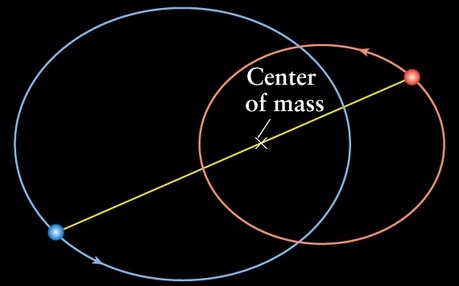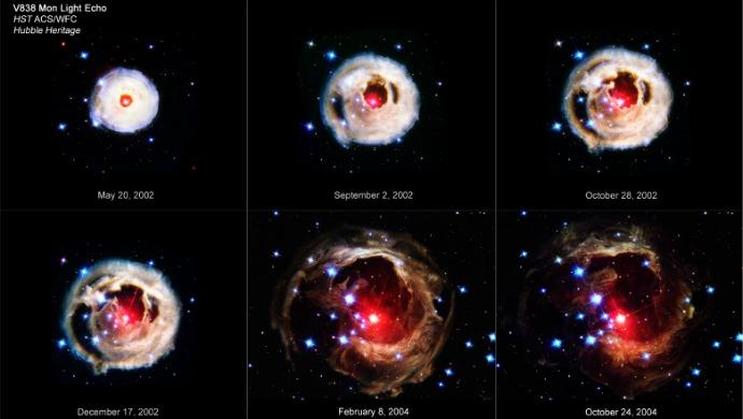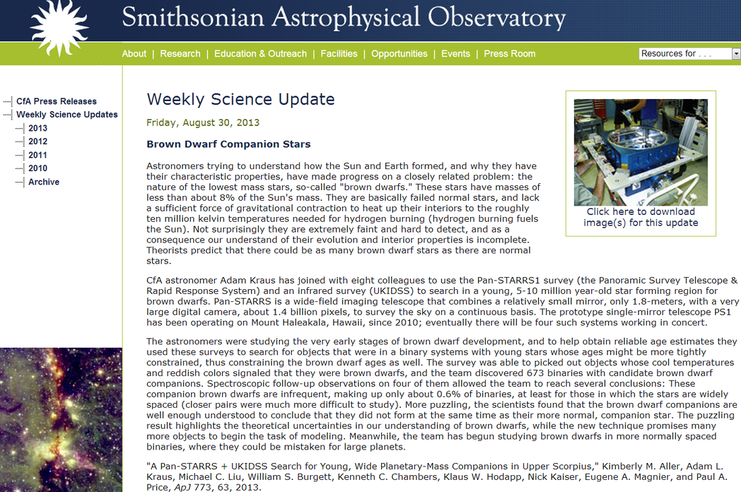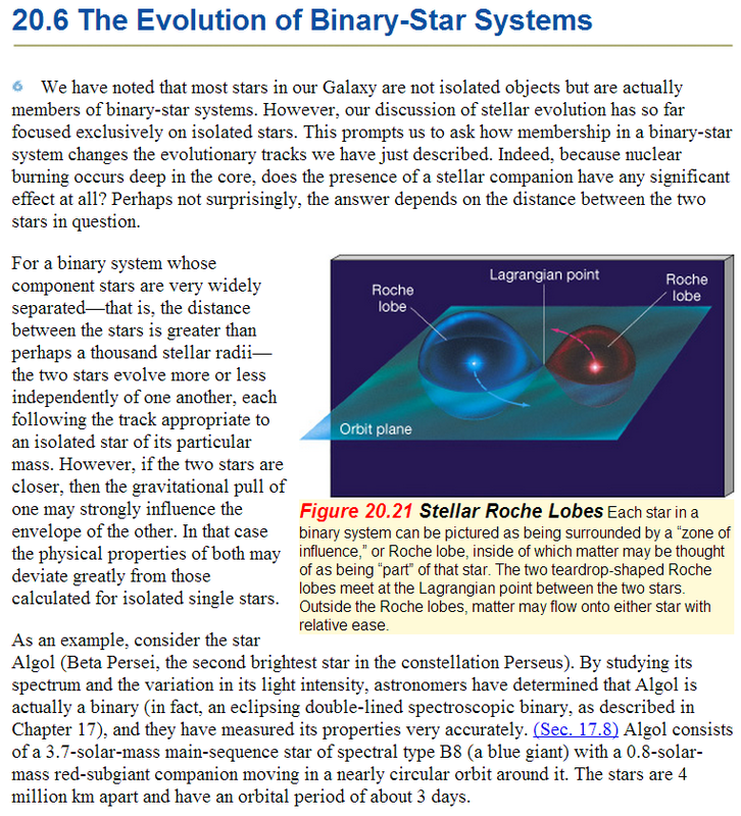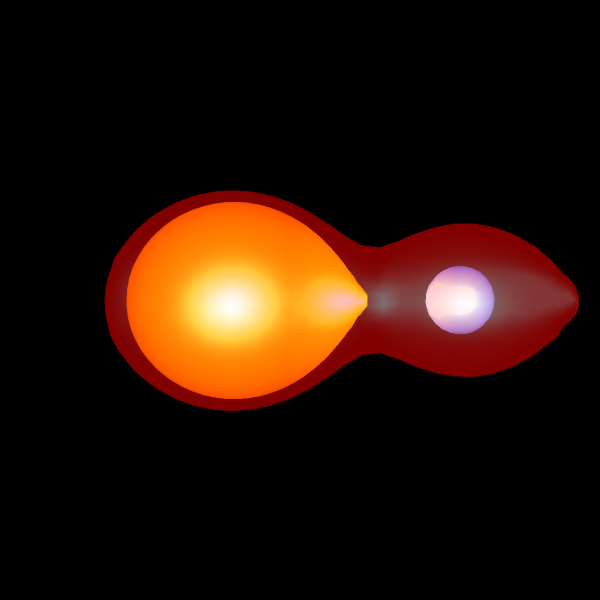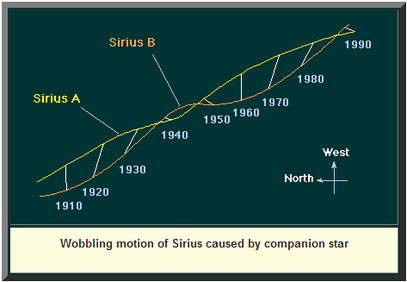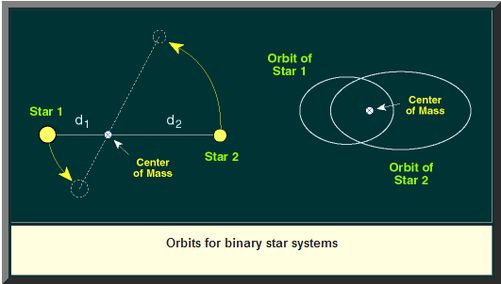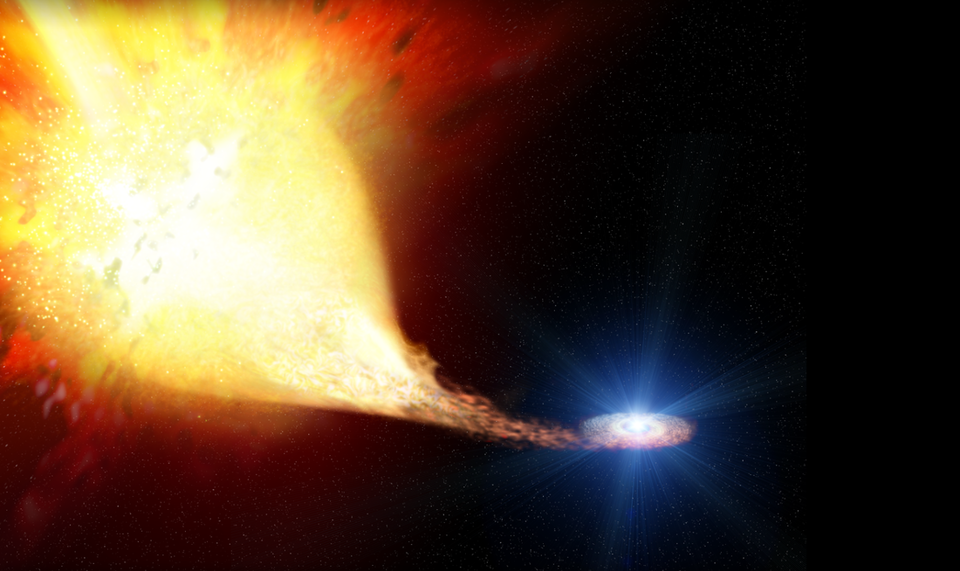http://www.ualberta.ca/~pogosyan/teaching/ASTRO_122/lect13/lecture13.htmlhttp://abyss.uoregon.edu/~js/ast122/lectures/lec10.html
http://csep10.phys.utk.edu/astr162/lect/binaries/eclipsing.html
http://csep10.phys.utk.edu/astr162/lect/binaries/accreting.html
http://csep10.phys.utk.edu/astr162/lect/binaries/visual.html
http://www.sciencedaily.com/releases/2012/10/121015150031.htm
http://csep10.phys.utk.edu/astr162/lect/binaries/eclipsing.html
http://csep10.phys.utk.edu/astr162/lect/binaries/accreting.html
http://csep10.phys.utk.edu/astr162/lect/binaries/visual.html
http://www.sciencedaily.com/releases/2012/10/121015150031.htm
|
Binary Stars

Red Explosions: Secret Life of Binary Stars Is Revealed

Contact Binary Star Envelopes
|
A close binary system in which a relatively massive donor star transfers material faster than it can be digested by a less massive accreting star. As a result, the transferred material eventually overflows the latter's Roche lobe, forming a common envelope around both stars. Frictional drag between the common envelope and the stars causes the two stars to spiral inward and the common envelope to be ejected. In this way it is possible for the components of a binary to reduce their separation from many AU (corresponding to an orbital period of tens of years) to a few stellar radii (corresponding to an orbital period of hours). One possible example of a star in the process of ejecting its common envelope is Eta Carinae.
|
